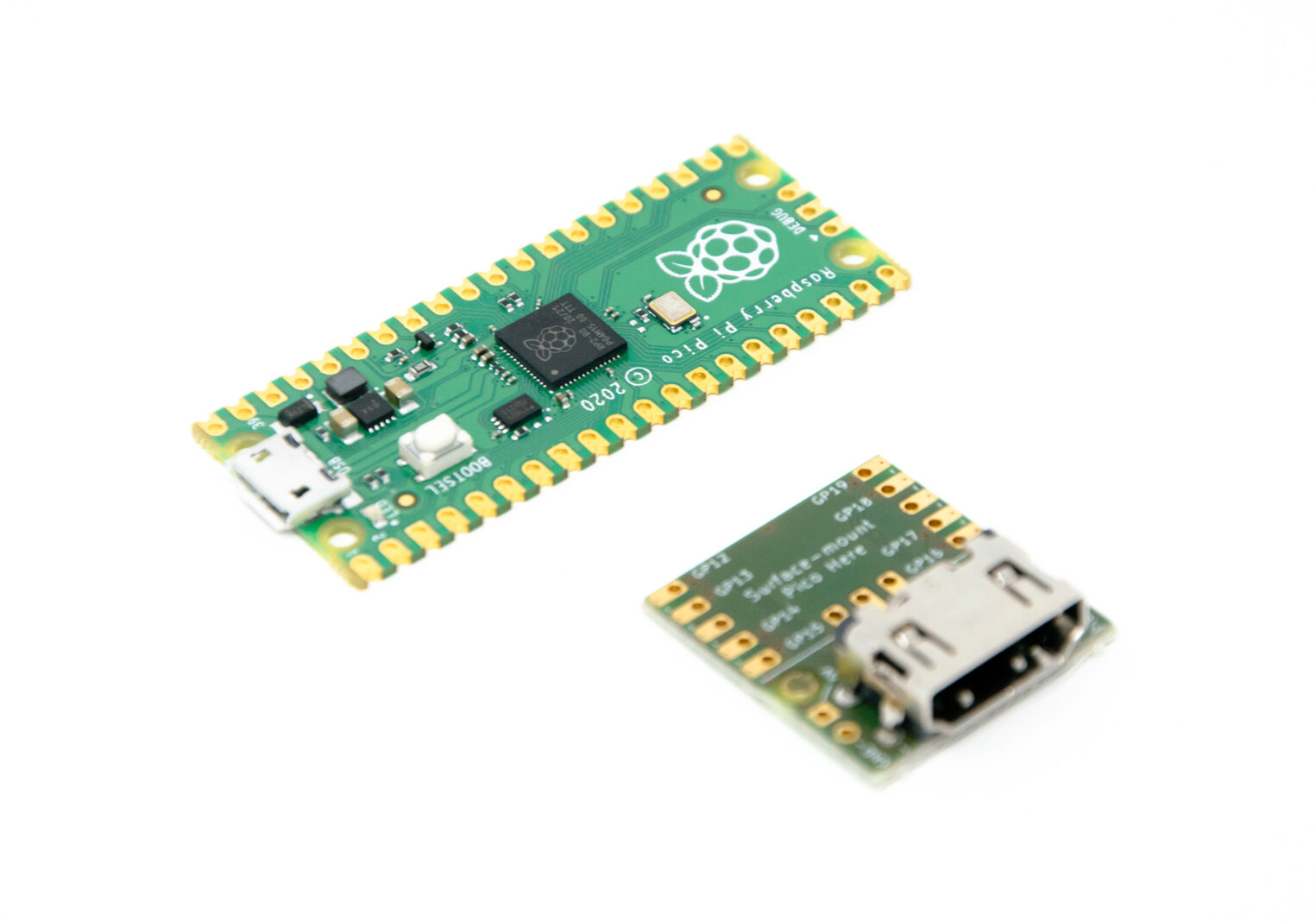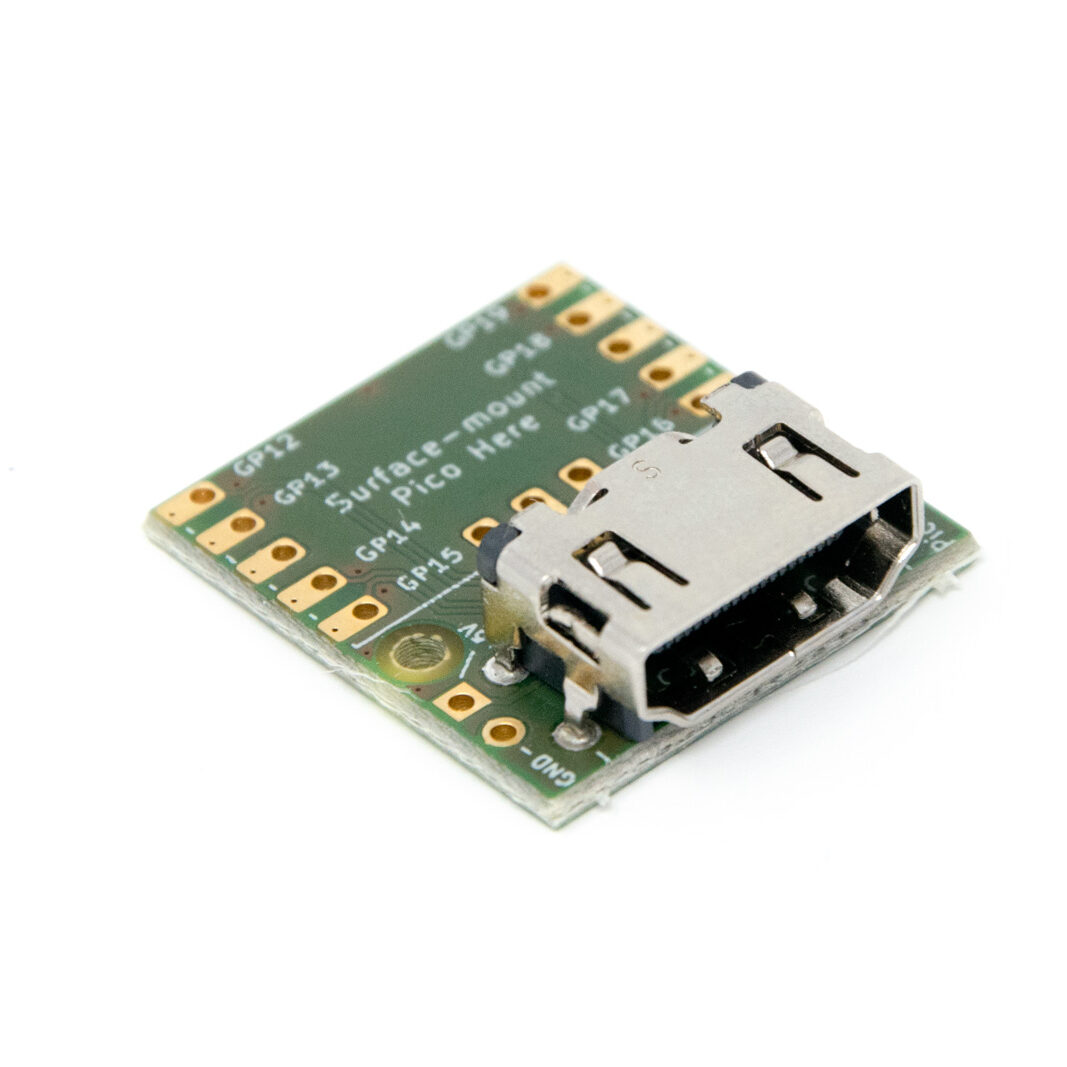Unlike other Raspberry Pi boards, the Raspberry Pi Pico does not have a built-in video output.
However, thanks to programmable IO (PIO) and this Pico DVI Sock, it is possible to add a DVI video output to the Raspberry Pi Pico!
The Pico DVI Sock was developed by Luke Wren, a Raspberry Pi engineer, in his spare time. He has published the design online under a CC0 license, so everybody can build the hardware from his provided files.
The physical video interface of the Pico DVI Sock is an HDMI connector, but it outputs a DVI signal. Historically, HDMI is a successor to DVI - so DVI signals can be simply transmitted using HDMI. Simple passive adapters allow you to connect HDMI cables to a DVI port.
assembly and project ideas
The DVI Sock can be soldered to one end of the Raspberry Pi Pico. Thanks to the castellated edges of the Pico, soldering is very easy. Let your creativity run wild with an additional digital video output on the Pico.
Here are some suggestions / possible project ideas:
- Mini game console based on the Raspberry Pi Pico
- Output of measurement values on a monitor

programming / example code
Unlike Raspberry Pi boards (single board computers), the Pico is a microcontroller - thus additional functionality must be programmed.
important hints
- the Pico DVI sock does not provide an audio signal
-
not all monitors seem to be compatible, in our tests not all of them showed an image
- delivered without accessories



